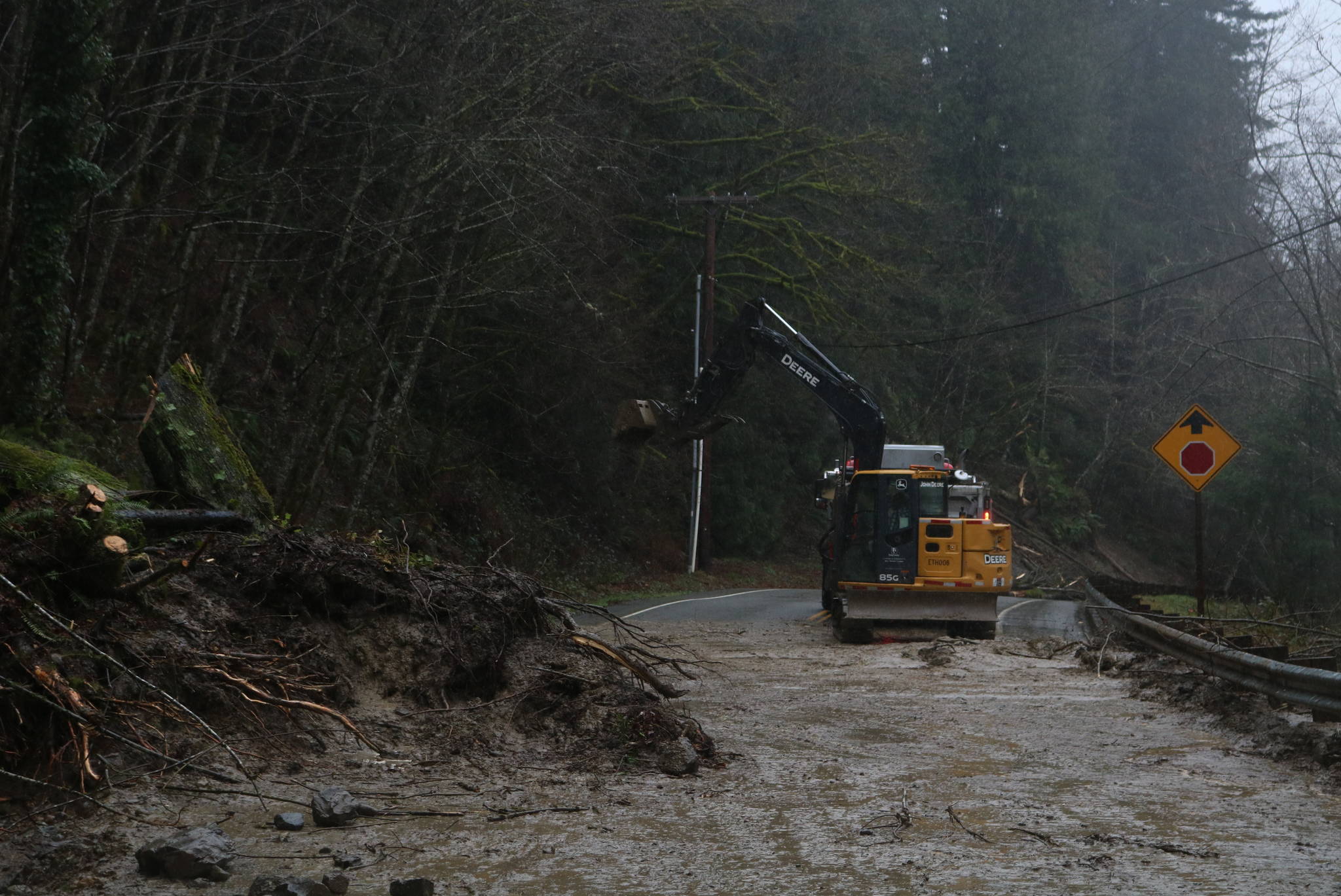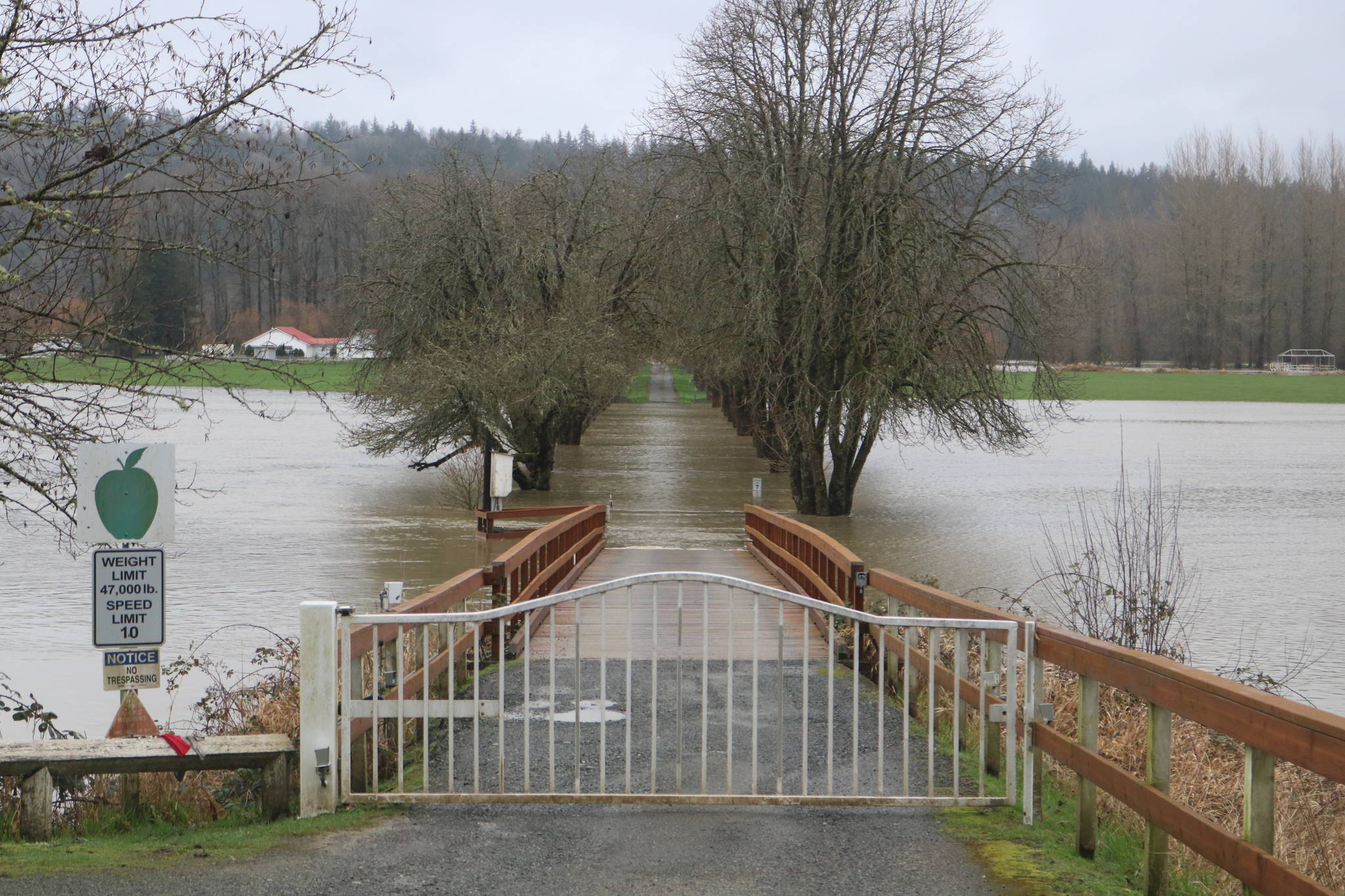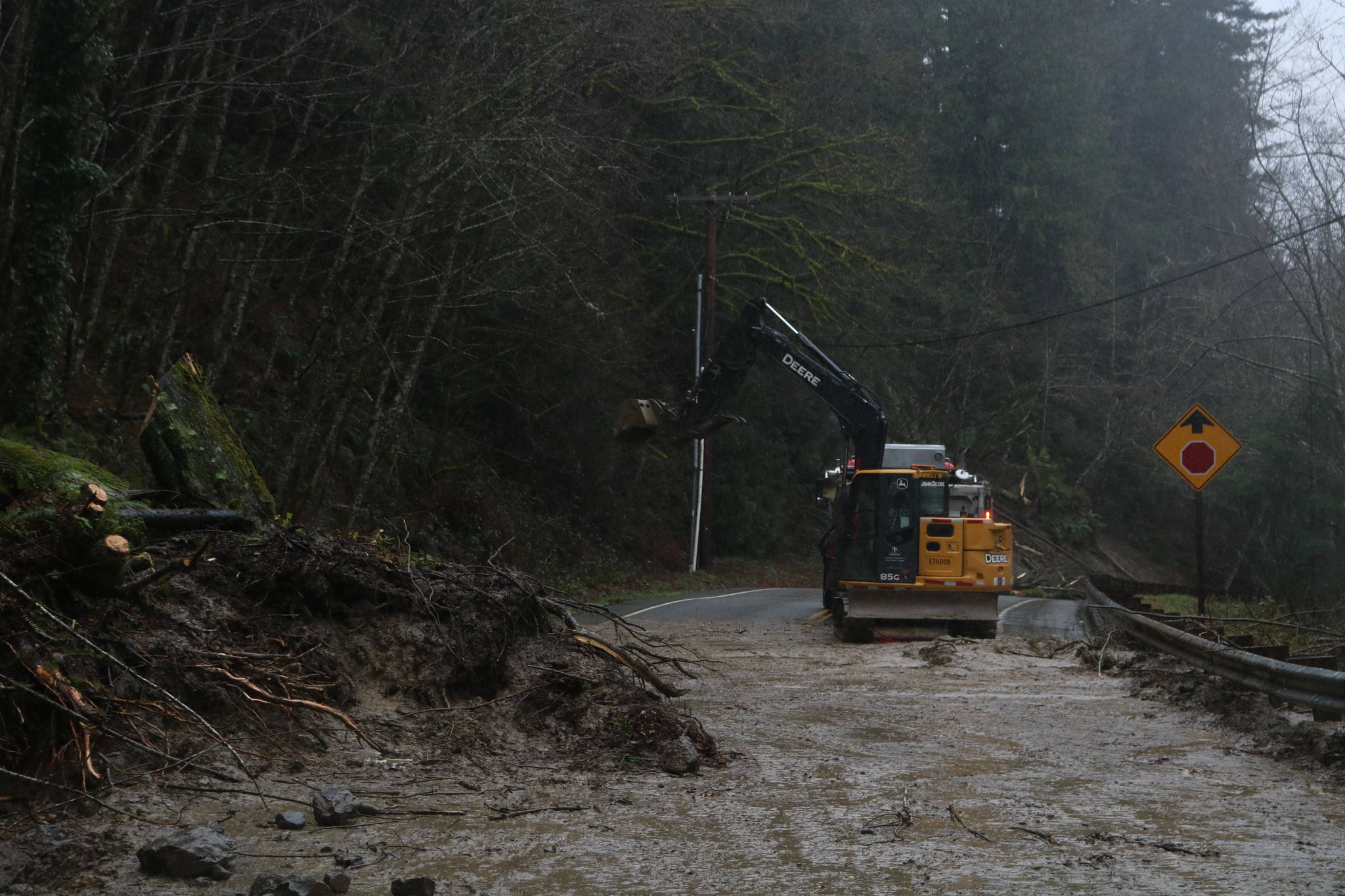The weather’s changing, Elbridge Stuart said as he stood in front of a large lake that 24 hours before had been his fields.
Stuart works with Carnation Farms, and on February 7, he and Rosy Smit, the farm’s director of education, were waiting out the flood waters. Torrential rains over the last week have caused two floods along the Snoqualmie River. The most recent crested on Friday afternoon.
“I wouldn’t say it’s normal, this is just an extraordinary year,” Smit said.
It’s an assessment that Cynthia Krass, director of the Snoqualmie Valley Preservation Alliance shares. This flood was the fifth this season that has risen above 56 feet at a river gauge near Carnation. On average, the area sees one major flood a year.
The season started with an early flood last October which swept through the valley a week before Halloween weekend, typically a financial boon for small farmers in the area.
“Farming in a floodplain is here to stay, and without farming in a floodplain we don’t have farming in King County,” Krass said. “The question is how are we going to mitigate and manage that. It’s hard, and these are resilient folks, but it’s hard.”
Some farmers plant winter crops, but the actual crop losses will likely be far less than the October flood. But for farmers, even off-season floods mean shuffling equipment and livestock to high ground. On Friday all across the lowlands lining the Snoqualmie River, houses turned to islands as farmers and homeowners alike waited out the storm.
Siri Erickson-Brown started preparing days before when she and her husband read the forecast. The couple owns Local Roots Farm off NE 124th Street, north of Carnation. The road leading to her house was completely submerged on Friday.
Once the floodwater crests, they can begin using a boat to shuttle themselves back and forth to the road for supplies or to drop their children off for school.
“We’ll be rowing on Saturday,” Erickson-Brown said.
Erickson-Brown on Thursday she would be watching the water levels to see if they needed to move animals and equipment to even higher ground.
Flooding has also been pronounced in Issaquah as school districts experienced delays this week, and the Issaquah Hatchery dealt with high waters. Issaquah received nearly 3.5 inches of rainfall as of Thursday. The Cedar River was also experiencing high flows, said King County Department of Natural Resources spokesperson Doug Williams. Flooding in Snohomish County was also reported by the Daily Herald.
In response, Lt. Gov. Cyrus Habib declared a state of emergency in Western Washington counties on Feb. 5, including King and Snohomish. Storms beginning in late January, including the current one, are estimated to cause more than $3 million in damages.
Changing weather
It’s hard to attribute any one weather event directly to climate change, but heavier rains and flooding are exactly in line with scientist’s predictions for East King County. The University of Washington’s Climate Impacts Group has been studying the effects of a hotter planet on the state. Amy Snover, the Group’s director, said more rain and less snow is expected, and when it does rain it will be heavier.
“I think that this year shows us the kind of things to expect,” Snover said.
The Climate Impacts Group recently released a localized summary of a United Nations report outline impacts to water. It’s predicted that storms will increase by up to one-third by 2080 since warm air hold more water.
The Cascade and Olympic mountain ranges additionally have the most “warm snow” in the U.S., meaning snow that falls when temperatures are between 27 32 degrees. Even a modest increase in temperature could wipe that out.
Much like 2015 is expected to be typical of mid-century summer climate conditions, this winter could be a preview of what’s on the way for King County’s rainy season. However, Snover said the impacts could become even more pronounced.
“There will be no normal until we stop increasing greenhouse gas emissions, until we stop increasing the problem,” Snover said. “So there will be no new normal until we stop making this worse… these changes aren’t just removed, happening to some other part of the world.”











